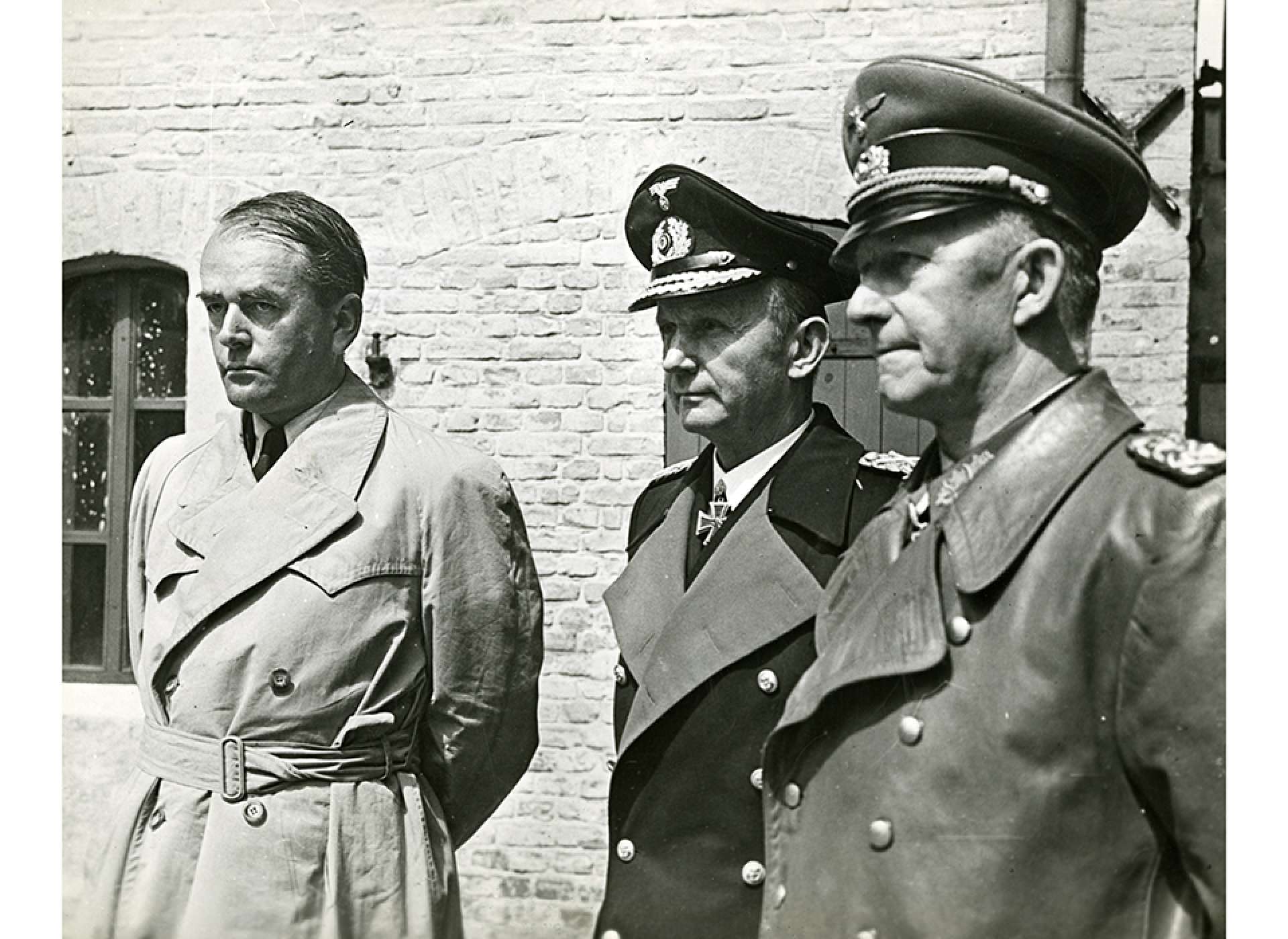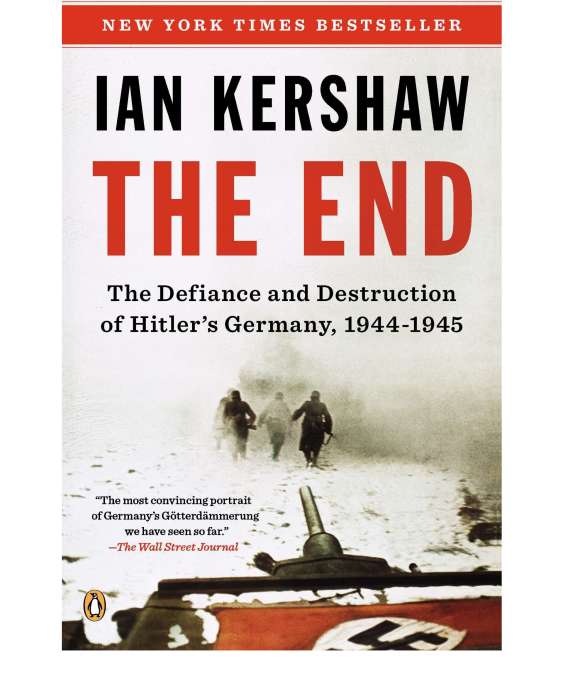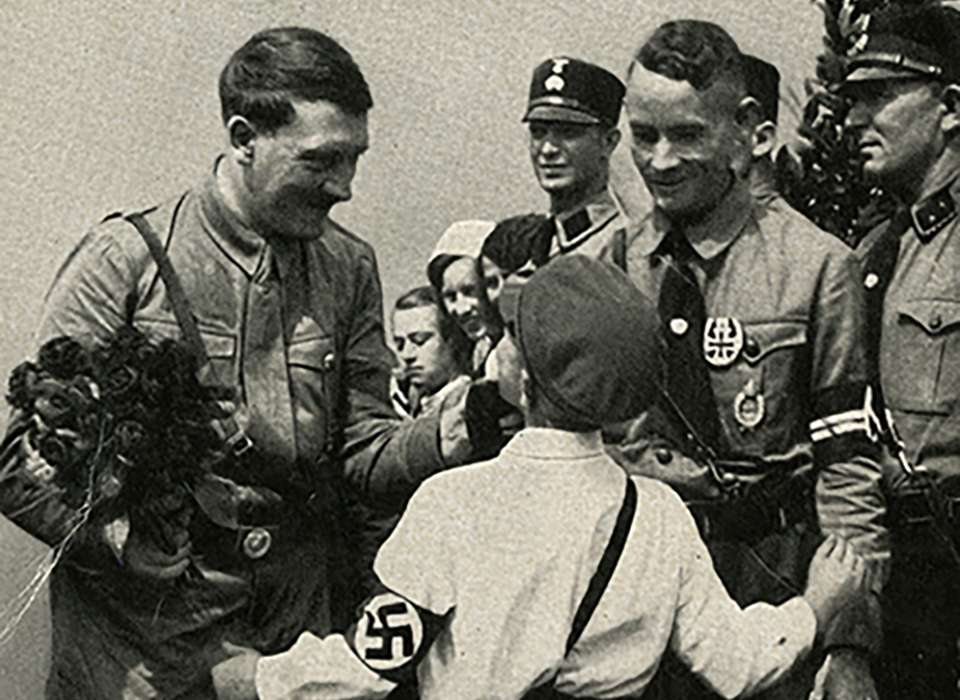Top Image: Nazi Propaganda Photo of Adolf Hitler, The National WWII Museum, Gift of Mr. Mac Evans
Even as the Third Reich he had once prophesied would last a thousand years crumbled all around him, Adolf Hitler desperately clung to his racist vision of the world. In March 1945, Allied forces poured over the Rhine River after the Americans captured the Ludendorff Bridge on March 7. On March 16, the German army’s last offensive of the war, Operation Spring Awakening in Hungary against the Red Army, collapsed. For the Führer the impending defeat proved that Germans were simply neither strong nor ruthless enough to do what was necessary to achieve victory. Deeming Germany a failure of a nation, Hitler prepared a decree that would seal the country’s collapse with catastrophic finality.
The decree came about after Hitler studied a memorandum sent to him on March 18 by his trusted Minister of Armaments, Albert Speer. Therein, Speer reported the German economy could only hold out another four to eight weeks. That was the absolute limit for the Third Reich’s war effort. In the text, Speer went on to urge Hitler to concentrate on doing everything possible for the country’s population to ensure their survival.
Unmoved, Hitler did not yield an inch. In Gitta Sereny’s biography of Speer, Hitler is quoted as responding, “it is not necessary to worry about their [the German people’s] needs for elemental survival.” He stunned his Armaments Minister, accustomed to the Führer’s fulminations against the “inferior” peoples of the Soviet Union, by declaring “the future belongs entirely to the strong people of the East.” On March 19, Hitler then promulgated a special decree titled “Destructive Measures on Reich Territory.” Otherwise remembered as the “Scorched Earth Decree” or “Nero Decree,” for the brutal Roman Emperor Nero (ruled 54-68 C.E.), the order mandated the destruction of Germany’s infrastructure.

Albert Speer with Admiral Karl Dönitz and Colonel General Alfred Jodl in Flensburg, Germany, May 23, 1945. The National WWII Museum, Gift of Dylan Utley.
Nothing was to be spared that might potentially aid the Allies. “Our nation’s struggle for existence forces us to utilize all means,” Hitler proclaimed, “to inflict lasting damage on the striking power of the enemy.” The order applied to all production, communication, and transportation facilities. Railroads, bridges, communication lines, docks, public utilities, factories and mines were to be demolished. Hitler entrusted to the military commanders as well as to the Reich Defense Commissars and Gauleiter, Nazi Party administrative officials known for their fanaticism, the task of carrying out this draconian edict. There were to be no exceptions.
Terrified of what this meant for Germany’s future, Speer intervened. By the end of March, he managed to convince Hitler to delegate to him sole authority to implement the order’s provisions. Hitler realized that Speer would almost certainly obstruct its execution. Nevertheless, he relented. Speer should not be made into a hero for his intervention, however. He had faithfully served Hitler for years and was heavily involved in the massive exploitation of slave labor in the Reich. The Allied authorities recognized this during the Nuremberg War Crimes Tribunal and sentenced a remorseful Speer to twenty years in prison.
According to Ian Kershaw, the "non-implementation of the 'scorched earth' order was the first obvious sign that Hitler’s authority was beginning to wane, his writ ceasing to run.” Far more non-compliance was to follow in the last apocalyptic month of the Nazi dictatorship’s existence. The “Nero Decree" also throws additional light on Hitler’s Social Darwinism and fanaticism. Faced with his regime’s downfall, he preferred the total crippling of Germany’s economy. Yet Hitler's power had so eroded, he had no choice but to accept direct insubordination.
Further Reading:
Bessel, Richard. Germany 1945: From War to Peace. New York: Harper Perennial, 2009.
Kershaw, Ian. Hitler 1936-1945: Nemesis. New York: W.W. Norton & Company, 2000.
Kershaw, Ian. The End: The Defiance and Destruction of Hitler’s Germany, 1944-1945. New York: The Penguin Press, 2011.
Sereny, Gitta. Albert Speer: His Battle with Truth. New York: Alfred A. Knopf, 1995.
www.ghdi.ghi-dc.org (German Historical Institute-German History in Documents and Images).

The End: The Defiance And Destruction Of Hitler's Germany, 1944 - 1945
Examines why the Third Reich resisted surrender for months after it had clearly lost World War II, drawing on testimony from civilians and former military insiders to discuss the Nazis' psychological power over German citizens.
Jason Dawsey, PhD
Jason Dawsey, PhD, is ASU WWII Studies Consultant in the Jenny Craig Institute for the Study of War and Democracy.
Cite this article:
MLA Citation:
APA Citation:
Chicago Style Citation:





![Max Fuchs, New York City cantor, sings as Rabbi Sydney [sic] Lefkowitz, Richmond, VA, conducts the first Jewish services from Germany.](/sites/default/files/styles/max_650x650/public/2025-10/image1.jpg)



